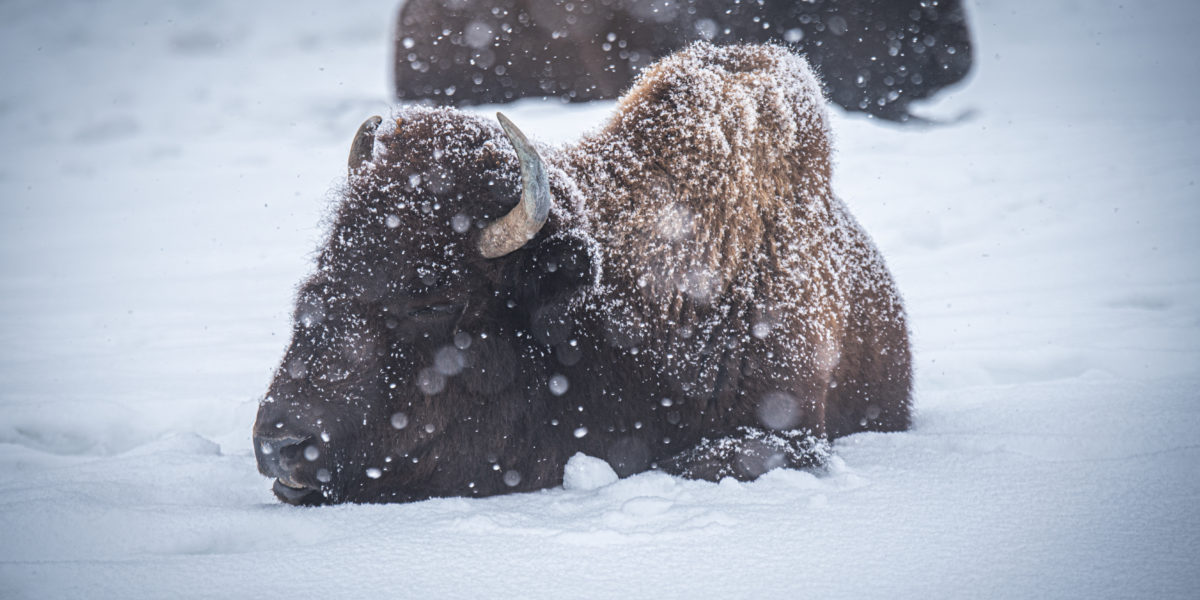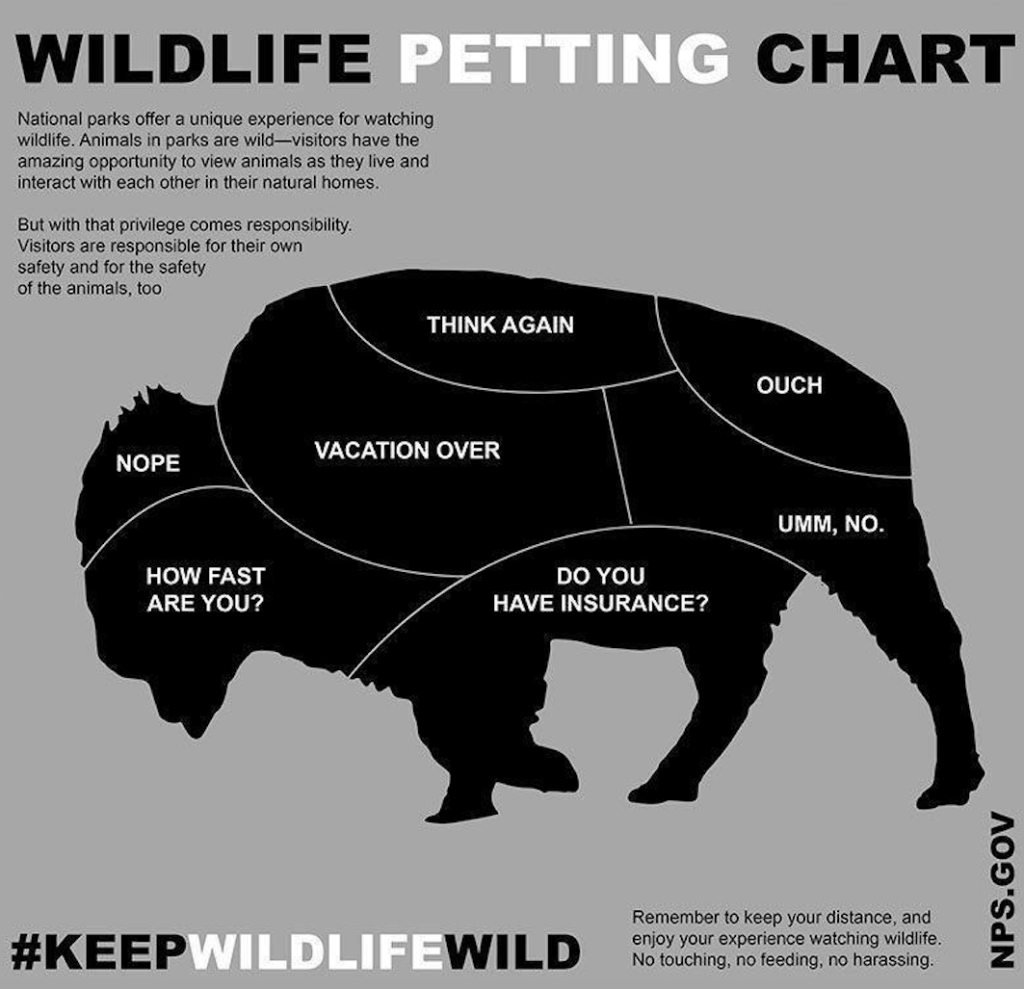
Park Visitors Keep Trying to Get Close to Bison for Some Reason
The most recent bison attack was captured on video from South Dakota’s Custer State Park.

J.D. Simkins

Sept. 4, 2020 marks National Wildlife Day, an opportunity to raise awareness and appreciation for endangered animals, animal sanctuaries, and the numerous measures designed to protect some of our world’s most wondrous creatures.
What better way to celebrate wildlife—and a long weekend—than to not endanger your livelihood strictly for the purpose of a close proximity selfie?
We’ve seen the scene play out ad nauseam in the news. We’ve seen the warning signs posted by the National Park Service. We’ve received pamphlets at park entrances peppered with phrases like “Do not approach,” “Bison are known to charge,” and “Keep your distance.”
And yet, the human brain has failed to evolve to the point where the sight of a bison, bear, moose, elk, or any wild animal elicits an automatic response of, “I probably should not take a closer look.”
That failure was on display once again last month in South Dakota’s Custer State Park, where a herd of curious motorcyclists intermingled with a herd of less-than-enthused bison.
Video of the incident shows a 54-year-old woman sit down within feet of a calf and its mother, disregarding a lifetime of wildlife warnings and the sheer size of the approximately 2,000-pound behemoths surrounding her on all sides.
WARNING: The video contains graphic language.
To the surprise of none, the woman is charged by another bison that, in the process of head-butting, manages to get its horns tangled in the woman’s belt and jeans, spinning her around like a rag doll before running off with a pair of new trousers attached to its head.
“And she doesn’t have any pants,” a resigned onlooker can be heard saying as the bison scurries away.
“This was certainly an unfortunate occurrence,” State Park officials said in a release about the incident. “We cannot caution visitors enough to respect the space of these animals and all the animals they encounter in the park.”
The woman reportedly survived with what were described as “pelvic injuries,” but her exact condition remains unknown.
This particular incident follows two separate bison attacks this summer in Yellowstone National Park.
On June 25, just two days after the park reopened following Coronavirus-related closures, a 72-year-old woman was charged by a bison when she repeatedly approached within 10 feet of the wild animal to take a photo.
The bison knocked her 10 feet into the air, then charged and hit her again when she managed to get to her feet. The woman was treated for multiple goring wounds and airlifted to a hospital.
Less than one month later, two visitors in Yellowstone National Park were charged by the hefty animals after getting a little too close for the herd’s liking. A video captured the incident, which reportedly occurred near Yellowstone’s Nez Perce Creek.
One of the individuals in the video manages to scurry away, but as they flee, the other trips and falls to the ground. Terrified onlookers shriek as the bison slows its charge and moves in to inspect its curious visitor. After a period of intense sniffing, the bison loses interest and casually strolls away.
The young woman was reportedly uninjured.
Bison-inflicted injuries in Yellowstone are more common than those caused by any other animal, according to the National Park Service.
“Bison are wild animals that respond to threats by displaying aggressive behaviors like pawing the ground, snorting, bobbing their head, bellowing, and raising their tail,” Yellowstone’s senior bison biologist Chris Geremia said in a NPS statement.
“If that doesn’t make the threat [in this instance it was a person] move away, a threatened bison may charge.”
To maximize safety, the Park Service recommends keeping at least 100 yards away from bears and wolves and a minimum of 25 yards away from all other animals.
For National Wildlife Day, Yellowstone shared tips on elk mating season-related warning signs to help visitors avoid the risk of being skewered.
Following simple rules can save lives. A few more Instagram “likes” are not worth dying for. Do your part to celebrate National Wildlife Day by keeping a safe distance from the wildlife.
If tempted to pet, don’t. Or, just refer to this handy petting guide provided by the National Park Service.

National Park Service
